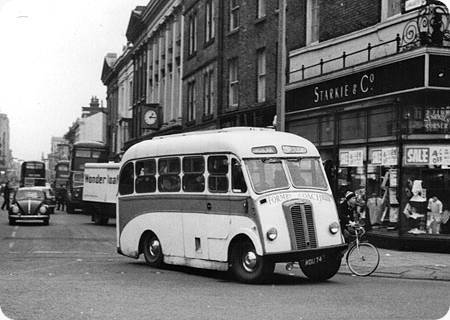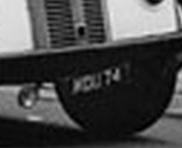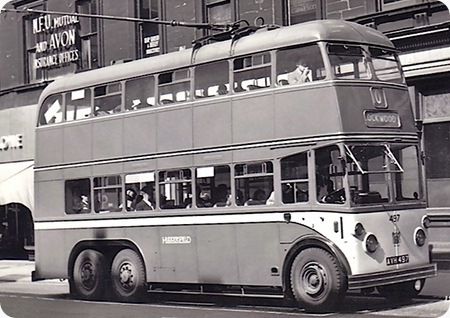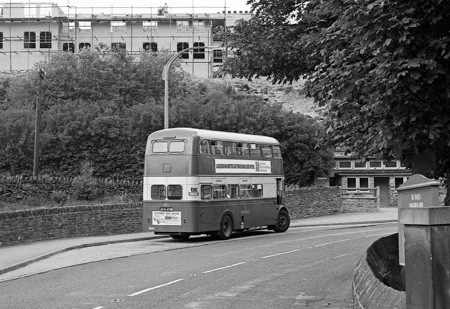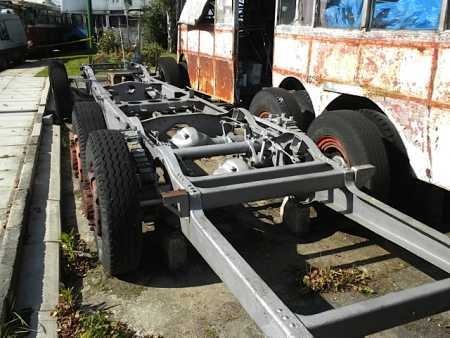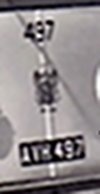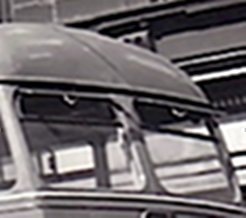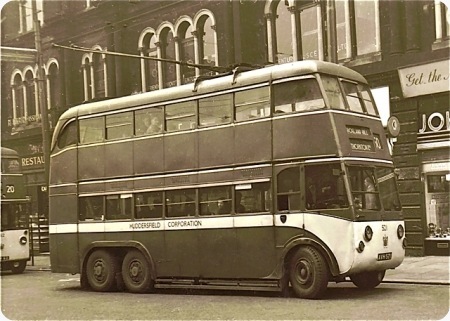Formby Coach Company – Karrier – MDU 74
Formby Coach Company
1953
Karrier
Reading C14F
After the demise of the W-type trolleybus, the Karrier name remained dormant until the Rootes Group revived it for this compact little 14-seater coach. It was clearly based on Commer units, and according to John Gillham’s ‘Buses and Coaches 1945-1965’ used a 4-cylinder petrol engine. It appears to have been marketed as a complete vehicle with Reading bodywork from the outset. No chassis type is indicated.
This example was owned by the Formby Coach Company, although this was clearly not its original owner, as it has a Coventry CBC registration. I have no information about its previous owner(s); the name in the nearside destination opening is indistinct but could be either Bibbys or Kirbys.
The shot was taken in January 1967 at the corner of Lancaster Road and Church Street in Preston, known locally as Starkie’s Corner from the clothing store behind (these words can just be made out on the corner window above the prominent ‘SALE’ sign). Note also the three Preston Corporation deckers in the background, all in the older maroon livery. The building with the clock is the Transport Department offices.
Photograph and Copy contributed by Alan Murray-Rust
17/03/13 – 09:59
Thanks for posting, Alan. There is still a Formby Coaches (based in Formby) appearing on the web, although it probably isn’t the same one.
Looking at the background, don’t those Preston buses in the old livery look dismal? The blue and cream gave a much-needed boost to the impression. And a WONDERLOAF delivery van – remember???????
Pete Davies
17/03/13 – 15:48
This is lovely ‘action’ photo (leaning round the corner) of a Karrier Q25 chassis and an early Reading body of the type called Lilliput. It was exclusively built on Karrier chassis and ‘Karrier/Reading Lilliput’ was a registered trade mark. They were made throughout the fifties and sixties and sold to many well-known companies such as Frames Tours, these examples looking outstanding! The GPO ordered a lot of (modified) ones for outside broadcasting duties. I recall them well in this role. They were a nice little earner for Reading – the cost of them as luxury coaches at that time was around £1250!
Chris Hebbron
17/03/13 – 16:54
Many thanks for the very complete expansion of the details of this – in my opinion – rather neat little vehicle; I was a bit frustrated by the rather scanty info in JCG’s book, although at least there was something there to work on. I also have a photo of a similar combination, but clearly of later date, with the horizontal grille, with Safeway of South Petherton (600 GYC). Presumably that would have been marketed under the Lilliput brand as well?
Alan Murray-Rust
18/03/13 – 06:33
You’re right, Alan. Later on, Reading & Co put stylish Lilliput bodies on the Karrier BFD chassis. Here is an example of one such vehicle: //tinyurl.com/bpr5tdp
Reading was very much into producing bespoke bodies and Lilliputs came in all shapes.
Plaxton was another company who built bodies on the Karrier chassis, but I think that the Karrier/Reading partnership had a large market.
Chris Hebbron
18/03/13 – 11:27
The photograph of Karrier/Plaxton 2677 NW of T.H.Parkinson of Heckmondwike reminded me that the vehicle in question was painted lemon yellow and later it was replaced by a newer model painted blue. Besides running the coaches the firm ran taxis and were booking agents for West Riding for the daily service from Wakefield to Blackpool that passed through Heckmondwike.
Philip Carlton
18/03/13 – 13:10
Further to my earlier posting of 2677 NW. Bruerian mentions on his Flicker Postings that in fact the registration number was in fact 2677 WW. There is probably a grain of truth in this. NW was a Leeds registration and a vehicle registered in Heckmondwike would have been registered in the West Riding of Yorkshire which had their offices in Wakefield. It would appear Plaxton made a mistake on their official photograph.
Philip Carlton
06/10/19 – 08:13
Lovely to see this photo. Looking at the photo, the registration number might be mistaken, could it be MDU 74? not 14? MDU 74 was a Karrier Q25/Reading Lilliput new in June 1952 to Shirleys of Meriden, near Coventry. (MDU is a Coventry registration). It was chassis number 32A 1158. It was sold in 1959 by Shirley’s and went to Handley, York. is it possible that your photo is this vehicle?
Paul Ellender
Monday 7th
Formby did indeed have MDU 74, acquired in 6/66.
Martin Ingle
07/10/19 – 07:41
Looks like MDU 74 so I have changed the title.
Peter
09/10/19 – 06:25
There was a diesel option on these using I think the Standard side valve diesel used in Karrier Bantam lorries.
Roger Burdett
05/03/20 – 06:54
I note in the first caption it says name in the destination is indistinct. It says maybe Bibby’s or Kirby’s. It’s a Coventry registration and Red House Group of Coventry operated some of these Karriers. Red House took over some other Coventry operators, including Bantam’s and Bunty’s. I would guess the name is either Bantam or Bunty. I would guess Bunty’s.
MDU 74 was owned from 1952 to 1959 by Shirley’s of Meriden, and as I note your photo was taken in 1953, it cant be MDU 74, even though they were identical vehicles. I suggest it really is MDU 14, if the photo is indeed from 1953. !! Sorry for misleading and confusing earlier, as it appears this really could be MDU 14.
Ref earlier comments, I see the date by the photo says 1953. Maybe that’s not the date taken, but refers to vehicle build date. If that’s the case and the photo is taken from 1966 onwards, then the bus is MDU 74.
Paul Ellender
Quick links to the - Comments Page - Contact Page - Home Page
